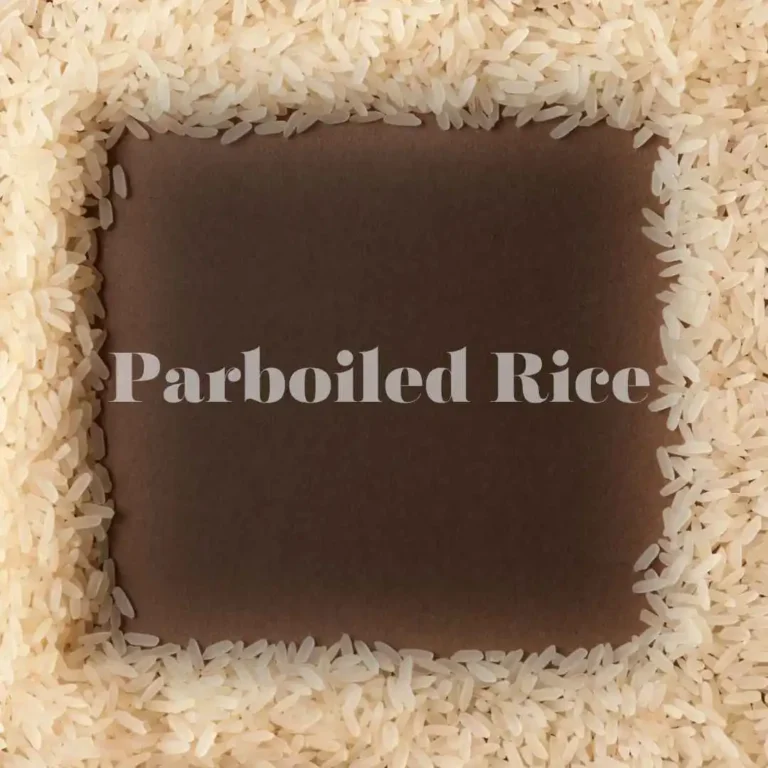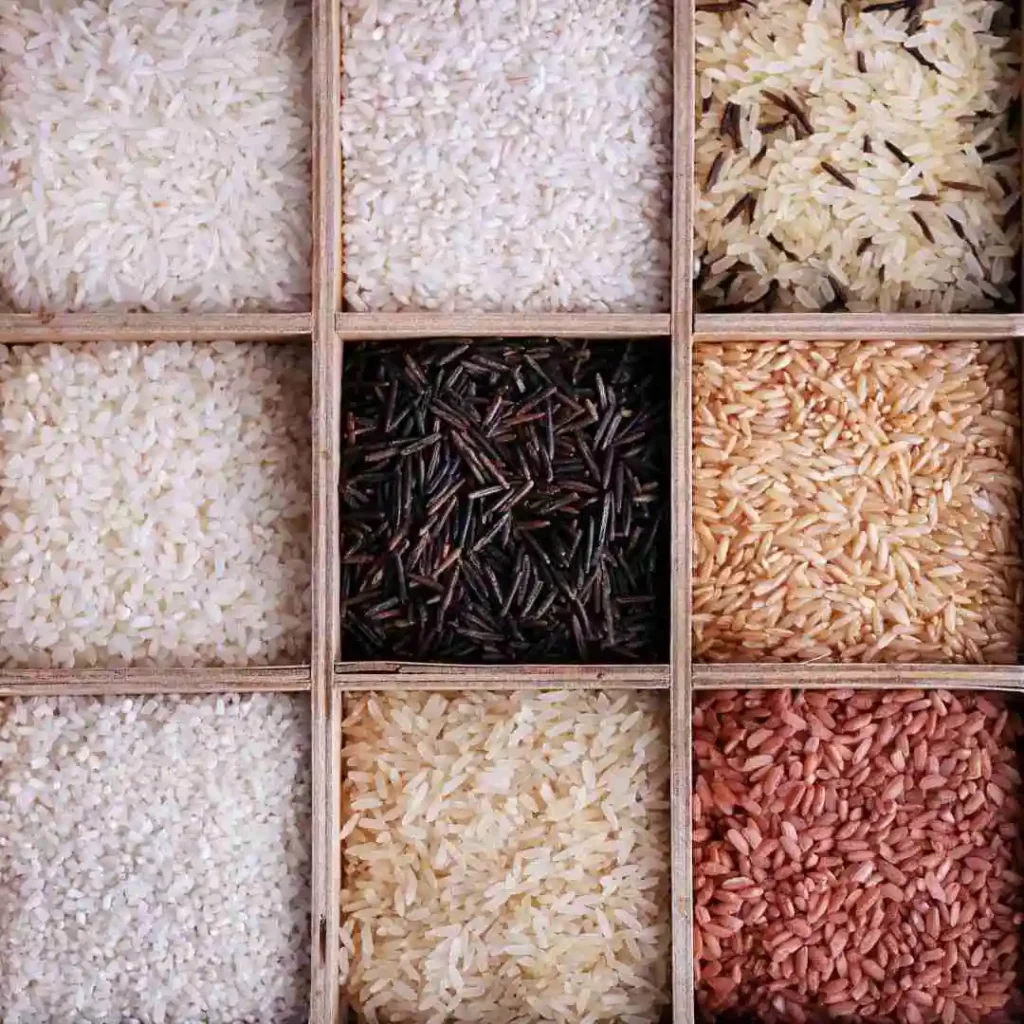What is Parboiled Rice : A Comprehensive Guide
Rice is a common and easy-to-cook dish to pair with various meals. Some types of rice take a long time to cook as the starch must break down properly. Numerous rice varieties like white rice, brown rice, black rice and more fragrant options like basmati and jasmine rice. However, parboiled rice is one underrated rice you should try.

What is Parboiled Rice?
Parboiling usually happens before the rice is milled, right before the inedible outer husk is removed to bend brown rice. It is also done before brown rice is fully refined to make it white rice.
There are three major steps involved in parboiling:
- Soaking: Raw and unhusked rice, also known as paddy rice, is fully absorbed in warm water to boost the moisture level.
- Steaming: The rice is well-steamed until the starch becomes gel-like. The heat generated through this procedure also helps kill bacteria and other microbes.
- Drying: In this step, the rice is steadily dried to lower the moisture content, which makes it milled.
The parboiling process changes the color of rice to a slightly yellow or amber, which is different from the pale and white shade of regular rice. Still, it is not dark like brown rice.
Nutrition Information of Parboiled Rice
Typically, a 155-gram cup of parboiled rice includes:
- Calories: 194
- Fat: 0.5 grams
- Carbohydrates: 41 grams
- Fiber: 1 gram
- Protein: 5 grams
This rice is also a great source of calcium and iron. Compared to white rice, parboiled rice has less calories, carbohydrates, protein, and fiber. Thus, it makes a healthy substitute for classic white rice.
Cooking Methods of Parboiled Rice
Different rice varieties tend to call for different cooking methods, including time, ratio of rice to liquid and quantity. That’s why it’s important to check the label and instructions mentioned on the packaging for best results. However, the great news is that parboiled rice cooks quicker than regular rice as it’s relatively cooked already.
The Traditional Method
It allows the grains to absorb the water they are cooked in, fluffing them up.
- 1 cup of uncooked rice.
- 2 cups of water
- 1 tsp salt
- Pour the water into the pan and boil it.
- Add the rice, stir well and lower the heat.
- Cover and keep it on a sim heat for about 20 minutes, until the rice has absorbed the water.
- Switch off the heat, cover the rice for 5 minutes and serve.
The Boil and Drain Method
In this method, you boil the grains in much more water than usual, then drain off the excess. It is the best method for rice, resulting in perfect and separate grains.
- 1 cup uncooked rice
- 6 cups of water
- 1 tsp salt
- Boil the water in a pan and add the salt.
- Wash the grains and add them to the boiling water.
- Bring the water to a boil again.
- Lower the heat to medium and cook for about 15 minutes.
Tasty Variations of Parboiled Rice

There are various yet easy ways to add extra flavor and aroma to your parboiled rice. Check out the following ideas to upgrade your recipes.
Broth – Use vegetable or any meat broth instead of water to make the rice more flavorful.
Spices – Add some herbs or spices like garlic and cumin to the water at the start. Ensure these spices go well with the main dish you will eat the rice with.
Soy Sauce – Drizzle some soy sauce on top of your cooked rice to add a little Asian flavor to your dish.
Salt, Pepper & Butter – Take the cooked rice, add a tablespoon of butter, some salt and pepper, which will make it taste delicious. You can also pour some olive oil rather than butter.
Benefits of Parboiled Rice
Though brown rice is considered the healthiest option for rice lovers, This rice is also an excellent choice for people who are not a fan of the nutty taste or chewy texture of brown rice.
There are some key benefits :
- Parboiled rise is somewhat beneficial for your gut health because of the starch. It acts as a prebiotic and enhances the volume of good bacteria in your gut. Moreover, it will ensure you will not experience acidity or bloating issues after eating it.
- This rice can also help boost your bone strength and hair health as it is a good source of calcium and iron.
- It is an excellent source of Vitamin B, which helps balance hormones.
- People with diabetes eat this rice as it improves insulin sensitivity, is low in the glycaemic index and manages blood sugar levels.
Storage of Parboiled Rice
If you have any leftover rice, make sure to store it in an air-tight container inside the refrigerator for about 3 to 4 days. The longer the rice is stored, the more the grains will be dried. Hence, it is suggested that the rice be resumed as quickly as possible.
Most importantly, the microwave is the quickest way to reheat your rice. Use a microwave-safe container with a lid to cook the rice. Add the rice and break any big chunks of rice with a spoon. Sprinkle some water to create steam and rehydrate the grains.
Ensure to cover the container and microwave for about 1 minute or so. Remove the lid and test the grains. If they are still dry or cold, repeat the process until you get satisfactory results.
FAQs
Ans: The major difference between boiled and parboiled rice is that parboiled is just partially boiled, unlike boiled rice.
Ans: Yes, parboiled/steamed rice is a healthier variant of rice compared to white rice varieties.
Ans: It is suggested to buy parboiled rice as it has less calories and carbohydrates, fiber, and protein.
Ans: Parboiled rice is widely known as converted rice, easy-cook rice, sella rice, and miniket (as famously called in West Bengal and Odisha in India and Bangladesh).
Ans: Parboiled rice is considered the healthier version of basmati rice as parboiling changes the rice at its molecular level.
Ans: Yes, you can eat parboiled rice daily paired with any other dish.
Conclusion
All in all, parboiled rise can fool you into thinking it is a pre-cooked or boiled rice variant, but that’s not true. It is simply processed differently from other rice varieties, but it is cooked and served just like any other rice variety. So, if you are not sure to use or stock up on white rice because of its restricted nutritional value and brown because of its limited shelf life,



